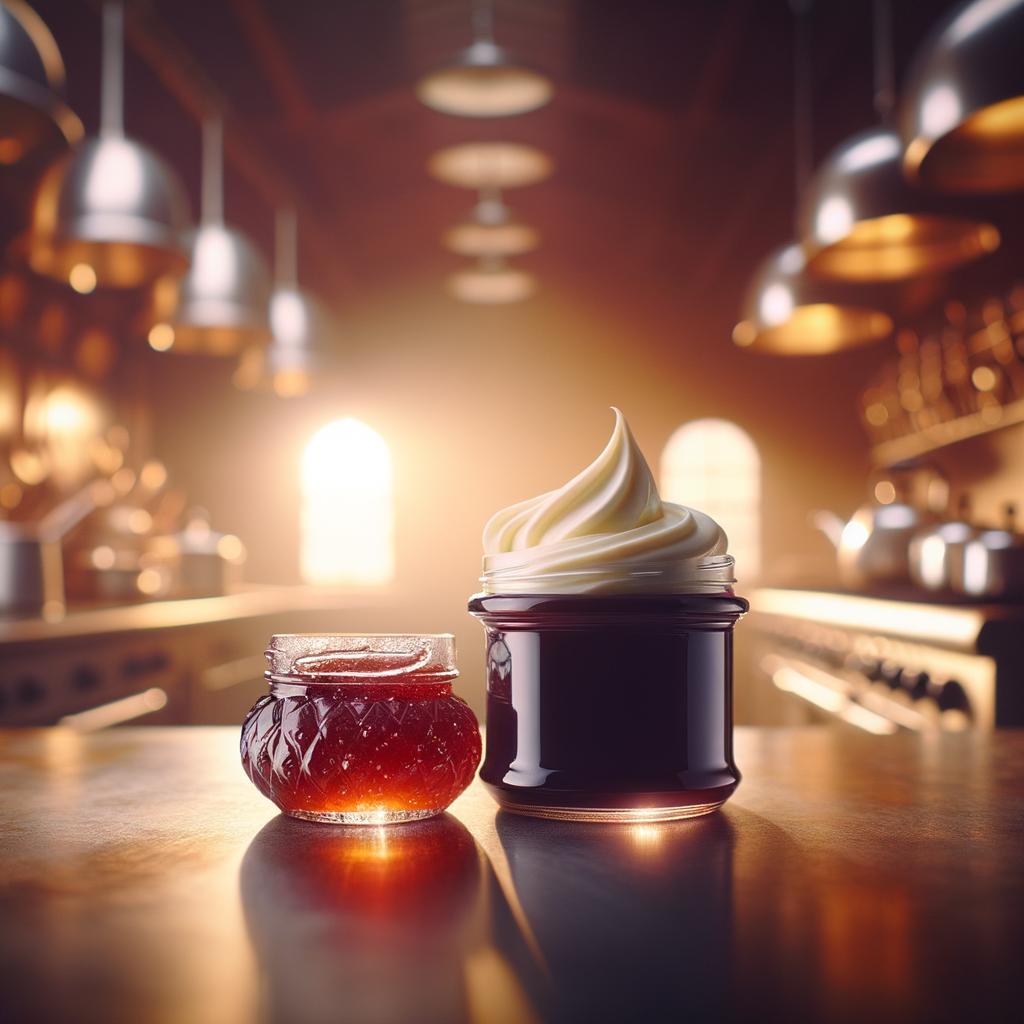Jam or Clotted Cream

Description
Let's take a journey into the world of Clotted Cream, a decadent, indulgent, and quintessentially British treat. A sight to behold, clotted cream has a luxurious, velvety texture that is at once thick and creamy, yet light and fluffy. Its color is a delightful ivory with golden yellow hues, often topped with a distinctive, buttery crust. The flavor profile is a symphony of richness, with a subtle sweetness that is the embodiment of opulence. What sets it apart from similar ingredients, like whipped cream or butter, is its uniquely indulgent texture and its deep, complex flavor that is both sweet and slightly savory.
Primary Uses
Clotted cream is a beloved staple in British cuisine, most famously used in the traditional cream tea where it is generously spread on warm scones, often with a dollop of strawberry jam. It also finds its place in a plethora of desserts, from trifles to tarts, enhancing them with its rich creaminess. Beyond the culinary realm, clotted cream has a cultural significance in the West Country, where it is an essential part of local heritage and tradition.
History
The origins of clotted cream are steeped in the romantic landscapes of Southwest England, in the counties of Devon and Cornwall. It's believed to have been introduced by Phoenician traders in ancient times, who brought the technique from the Middle East. Over centuries, clotted cream has evolved from a simple farmhouse treat into a symbol of British culinary tradition. Folklore often associates it with the mystical creatures of the British Isles, with stories suggesting that cream was clotted to entice helpful pixies and sprites.
Nutritional Information
Clotted cream is a calorie-dense food, packed with healthy fats, vitamins A, D, E, and K, and essential minerals like calcium and phosphorus. While it is high in saturated fats, when consumed in moderation, it can be part of a balanced diet. Its nutritional profile is similar to butter, but it contains less water and more fat, which gives it its distinctive richness. Its consumption has been associated with benefits such as improved bone health due to its high calcium content. However, due to its high caloric content, it should be savored in moderation.
As a food historian, clotted cream is a testament to the timeless allure of simple, wholesome ingredients, and the magical transformation they undergo through traditional culinary techniques. It's a delicious reminder of our connection to the past, and the sweet, creamy joys of the present.

